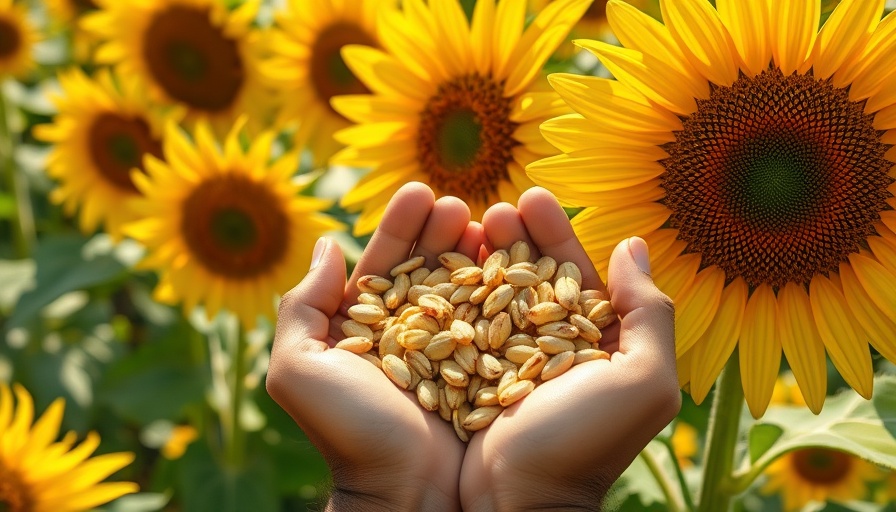
Unveiling the Secrets of Sunflower Seed Gardening
In the world of gardening, sunflowers stand out not only for their vibrant appearance but also for the delicious bounty they offer. If you’re ready to transform your garden into a source of crunchy, nutrient-packed sunflower seeds, you’ve come to the right place.
Understanding Sunflower Seeds: What Are They?
Sunflower seeds are technically known as achenes, which are the fruits of the sunflower plant. When you crack open a sunflower seed, you’ll find the kernel inside—a delightful treat that’s rich in nutrients. Depending on whether you choose oilseed or confectionery varieties, you’ll discover that these seeds vary in size and flavor.
Oilseed varieties are bred primarily for extracting cooking oil, whereas confectionery varieties are larger, thicker-shelled, and ideal for snacking. Understanding the differences between these types is crucial for maximizing your garden's potential.
Planting Sunflowers: The Essentials
To set the stage for a fruitful sunflower harvest, you must start by selecting the right location with plenty of sunlight. These plants thrive in well-drained soil and prefer a pH between 6.0 and 7.5. Ensure that your sunflowers are spaced properly to allow for their impressive height and sprawling leaves.
Watering is vital during the germination stage and the growing period; however, avoid overwatering, as sunflowers are somewhat drought-tolerant once established. It’s also crucial to monitor for pests and diseases, as these can quickly hinder the health of your plants.
Harvesting: The Right Time and Technique
Knowing when to harvest your sunflower seeds is key to enjoying their full flavor. Look for signs like yellowing leaves and brown flower heads; this usually indicates that your seeds are ripe and ready for harvest.
To harvest, simply cut the heads off and hang them upside down in a dry, cool place to let them dry. This process can take several weeks, but it's worth the wait to ensure your seeds are perfectly preserved.
Preparation for Enjoyment: Cleaning and Roasting
Once dried, it’s time to clean the seeds. Remove any debris and husks before rinsing them. To enjoy your seeds as a tasty snack, roasting is a popular option. Preheat your oven, toss the seeds with a little oil and salt, and roast until golden—typically 20-25 minutes. Not only do these seeds make for a great healthy snack, but they can also be added to salads, granola, or smoothies for a nutritious boost.
Beyond the Basics: Additional Tips and Tricks
Consider experimenting with different recipes using sunflower seeds to fully explore their potential. From homemade granola bars to sunflower butter, the culinary possibilities are endless. Additionally, share your excess seeds with friends or use them for bird feeders to spread the sunflower joy throughout your community.
Expanding Your Knowledge: Sunflower Varieties
Each sunflower variety has its unique characteristics. For instance, look for Mammoth Grey Stripe sunflowers for larger seeds, or the black oil variety for higher oil content. With the right choice, you can impact both the aesthetics of your garden and the flavors of your snacks.
Conclusion: Savor the Rewards of Your Labor
Growing sunflowers isn’t just about beauty; it’s about cultivating health, enjoyment, and creativity in the kitchen. With a little patience and care, your garden can yield a bounty of sunflower seeds that are both satisfying to snack on and packed with nutrients.
So, what are you waiting for? Dive into the world of gardening with sunflowers, and enjoy the fruits of your labor. Your taste buds will thank you!
 Add Row
Add Row  Add
Add 




Write A Comment